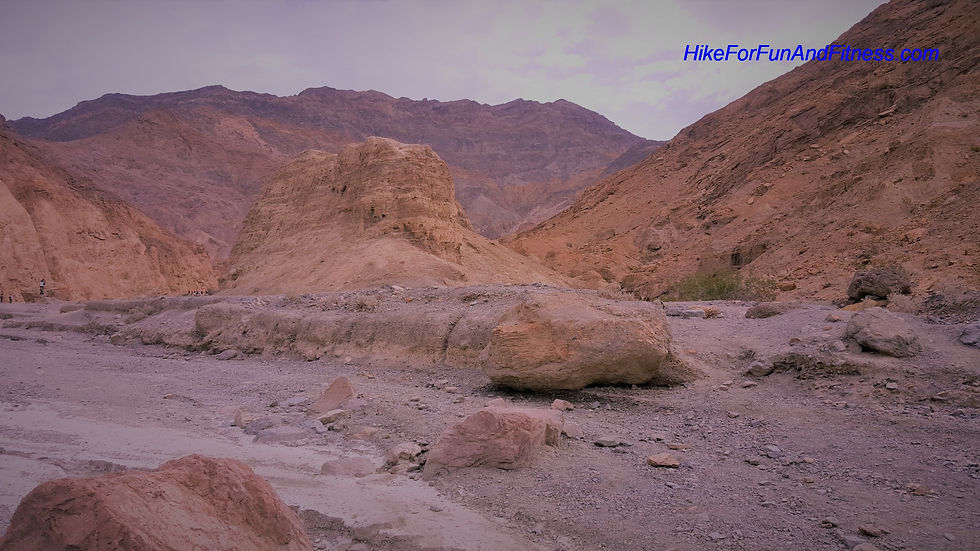

Mosaic Canyon - Death Valley National Forest

Location : Mosaic Canyon, Death Valley National Forest
Tree Cover : No treecover. Sunscreen recommended.
Parking : Parking near trailhead, click here.
Note : It is a good idea to carry water.
Note : Death valley gets pretty hot in summer so carry plenty of water with you. Be aware of rattlesnakes, scorpions, and stinging insects.
No pets, smoking, climbing onto rocks or flying drones allowed.
Mosaic Canyon is a geological art gallery. Irregularly shaped fragments of tan-colored Noonday Dolomite, sandy matrix, and limey cement create complex murals on the canyon walls. In other places, dolomite, transformed into marble by heat and pressure, forms colorful swirls in stream-polished whirlpools and chutes in the bedrock. The geologic history of Mosaic Canyon is a succession of fill-and-scour cycles. Major flash floods fill the canyon with up to 20 feet or more of gravel every couple of decades, often blocking easy passage with large boulders. Less intense storms slowly scour the canyon again, removing the earlier deposits.


The trail is 1.7 miles long, so if you go all the way till the end it is a 3.4 mile roundtrip. The narrowest part of the canyon occurs in the first half mile of the hike. Parts of the trail are sandy but the terrain gets rocky in some areas. Boots will definitely help you, check out more hiking tips here.
The remains of iron railings and steps installed at the first narrows serve as reminders of a filled canyon only a few decades ago. Hiking up the canyon is a visual and intellectual treat. The canyon itself offers evidence of past floods and serves as a vivid reminder of the enormous power of water.















